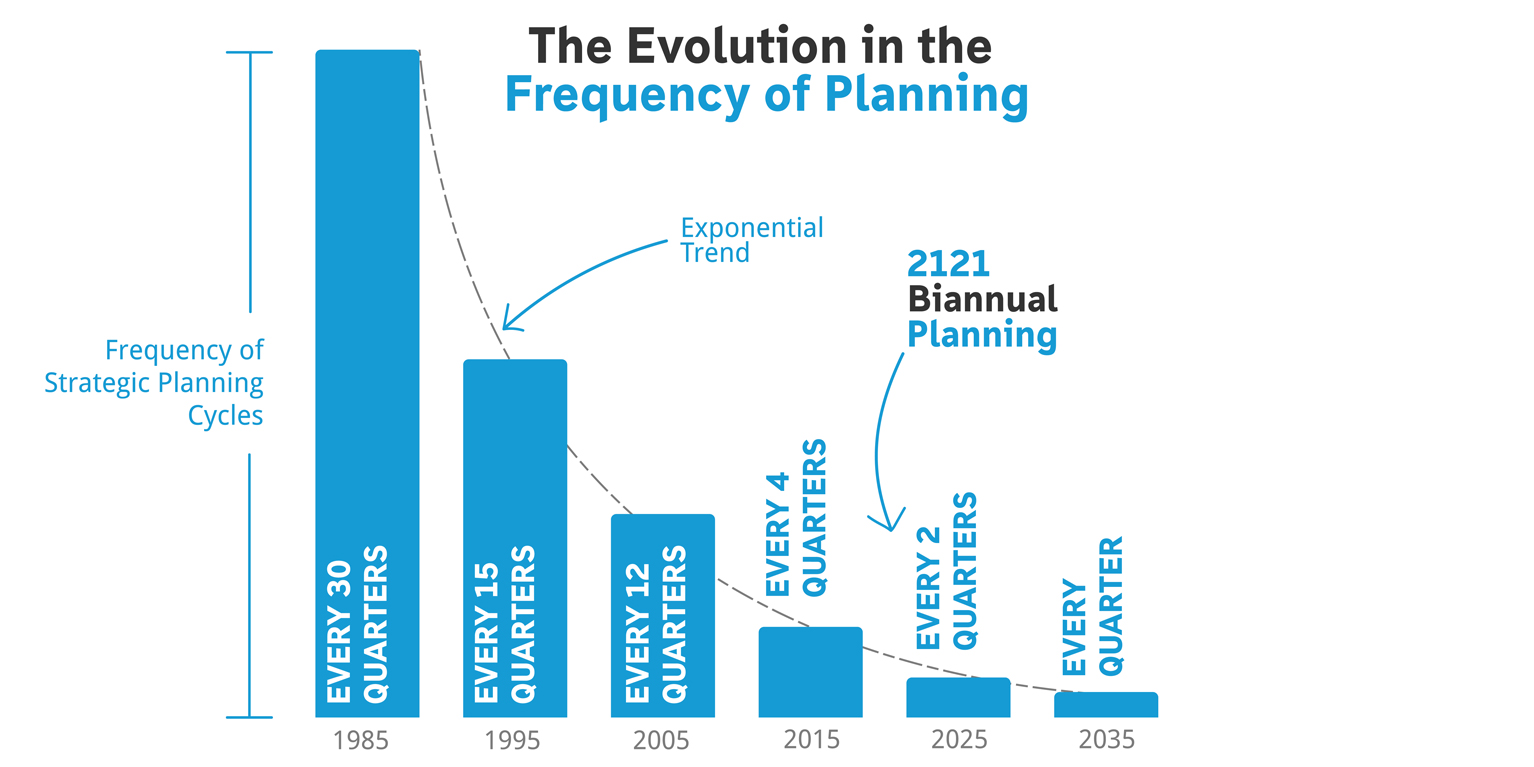The Evolution of Strategy ~ A 2020 Reboot
Four years ago, Caroline from the StrategyBlocks team published a short blog discussing the Evolution of Strategy. Over the past 1541 days that blog has been read on average every 6 hours, everywhere from Afghanistan to Zimbabwe, and that frequency just keeps accelerating. While we can perhaps draw some conclusions from the analytics, one thing is clear: business people all over the globe are curious about how the market views strategy as a specific discipline and are aware that it is in a constant state of change. Also of interest is that during June 2020, the reading frequency of the blog rose 600%. During complex, almost chaotic economic conditions, business people see strategy as critical to their long-run success.
The frequency of strategic planning in the past
Much like the views of the blog post, the frequency of business planning continues to accelerate. There is nothing fundamentally wrong with having a 10 year vision and in 1985 creating a 10 year goal was common. However, looking back I think we can all agree that was a long time between refreshes. Five years ago it was an annual process, aligning conveniently with the traditional fiscal year. But taking this trend forward, does this mean that we are all outpacing the classic 12 month planning horizon?
The frequency of planning today
From what we have seen working with our customers the answer is quite simple –it seems the classic 12 month period is just too long. But for almost all businesses “12 months” is so ingrained in the corporate culture, how do they break out of that cycle? We all find ourselves at an interesting time where customers, and competition are driving an internal need to innovate, and if the predicted trend is correct the need for planning this strategic innovation is occurring on a biannual basis. In previous blogs I have discussed the importance of the “soft systems” of strategy, those intangible, unspoken things; culture, shared meanings, tradition. But we have to build in agility and dynamism into the fabric of these systems.
Agile strategy
We’ve discussed the value of agile strategy for some time, and we see it as a key facet of Transformational Strategic Execution. To deal with the regular need to replan, agility must be built into the process and governance of strategy. StrategyBlocks technology shares a roadmap of future innovation and communicates this visually to those people (and teams of people) with execution accountability. It tells the “how are we going to get there” story of strategy and provides a mechanism to track its delivery, and monitor its outcome. It encourages experimentation and therefore allows companies to adapt at pace to the changing market conditions.
Dynamic strategy
A system that is dynamic is characterized by constant change, activity, or progress. If we continue to track into the future, the ever-shortening cycles of planning, this need for adaptability will only increase. Even now many businesses we work with are planning around a “90-Day” period (see our OKR blog). Planning must be controlled, yet flexible and retain alignment to core vision. By adapting plans more often, we all have a better chance of success throughout both smooth and challenging times.




Leave A Comment